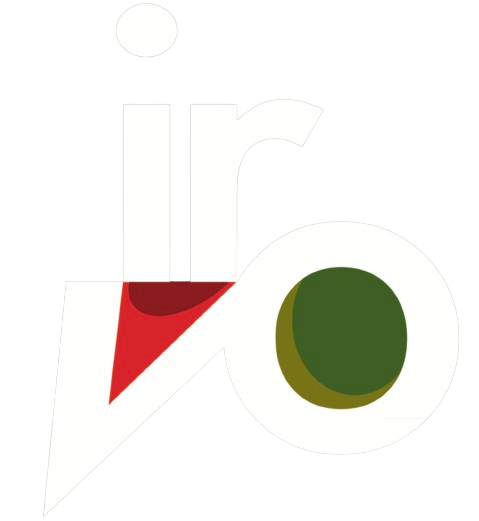3 October 2013
Igp Olive Oil, specifications presented
It was presented this morning, in the Yellow Hall of Palazzo dei Normanni The Regulations for Extra Virgin Olive Oil PGI Sicily, drawn up by the technical table ofRegional Department of Agricultural and Food Resources,
which marks a decisive stage in that marathon aimed at recognizing a brand of quality and territorial identity certified and guaranteed at origin, which in recent months has seen regional public institutions and trade associations working in synergy. If the practice does not suffer any problems in next year's agricultural campaign, PGI Sicilia branded productions will debut.
The Protected Geographical Indication (PGI) it is - like the PDO - a quality mark, issued by the European Union upon proposal of the Ministry of Agricultural and Forestry Policies, which defines products that are identified by the peculiar characteristics linked precisely to the application of a production specification, of which it is proven the "historical" origin in the territory declared in the denomination. To this recognition for the “Born in Sicily” oil we got there also thanks to the decisive contribution of the Association for the Protection of Sicilian Extra Virgin Olive Oil which brings together all the regional organizations representing the entire oil supply chain, from the olive grove to the bottle.
The specifications for PGI Sicilia extra virgin olive oil define a series of rules which all producers must comply with and represent a valid tool for consumer protection, helping to make counterfeiting more difficult, allowing added value to be given to a product which it already has a clear social and economic importance on the island
“This specification – explained the regional councilor for agricultural resources, Dario Cartabellotta – arises from the need to protect our oils and the valuable cultivars available in Sicily. We want to avoid counterfeiting phenomena but also that our extra virgin olive oil is confused with others. For this reason we have included in the text all those elements that ensure traceability of the product and the guarantee that the oil that can boast the PGI Sicilia brand is not only bottled on the island but comes from olives grown and pressed in Sicily. Our objective is to give olive production throughout Sicily a single identification, also from the point of view of chemical-physical characteristics, which allows a leap in quality and economic redemption for the entire sector, especially for those who grow the olive groves".
He also attended the conference Maurizio Lunetta, president of the Association for the Protection of Sicilian Extra Virgin Olive Oil, promoter of the brand PGI Sicily, And Lucio Monte, general director of the Regional Institute of Wines and Oils of Sicily (IRVOS).
“The disciplinary – he declared Lunette – includes all the specificities of all the production areas of the island. The PGI Mark is a signature on the recognisability of the product born in Sicily and on the valorisation of the productive specificities of the Island. The objective is to establish a regional olive growing system through this denomination, emulating what has happened in the Sicilian wine sector, which guarantees added value to the image and to all the protagonists of the supply chain”.
The control on the conformity of production to the specification itself will be entrusted at the Regional Institute of Wines and Oils of Sicily (IRVOS), already competent in the field and certification body recognized by the Ministry of Agricultural and Forestry Policies.
“The competent and trained staff of the Institute – explained Lucio Monte – will guarantee the traceability of the product according to the specifications in accordance with the provisions of the current community regulations. Thanks to the PGI Sicilia brand, we hope to increase the quantity of denomination products, contributing to increasing the perception of the quality of Sicilian oil production".
The Regulations for Extra Virgin Olive Oil PGI Sicily
The specifications for PGI Sicilia extra virgin olive oil precisely outline in 10 articles the quality path for the valorisation of the island's oil, establishing the criteria to be followed so that an extra virgin oil can be identified with this protection mark.
In particular, the document establishes in article 2 the varieties of olives from which it must be obtained (Aitana, Biancolilla, Bottone di Gallo, Brandofino, Calatina, Cavalieri, Cerasuola, Crastu, Erbano, Giarraffa, Lumiaru, Marmorigna, Minuta, Moresca, Nasitana, Nerba, Nocellara del Belice, Nocellara Etnea, Nocellara Messinese, Ogliarola messinese, Olivo di Mandanici, Piricuddara, Santagatese, Tonda Iblea, Vaddarica, Verdello, Verdese, Zaituna) and in article 3 the production areas. Of fundamental importance is article 4 where it is established that each phase of production is monitored, guaranteeing the traceability of the product through the registration in specific lists of the cadastral parcels on which production takes place, of the producers, of the millers and of the packers.
According to article 5, PGI Sicilia productions must come from olive groves cultivated according to the methods specific to the area in which they fall, in order to give the oil itself specific qualitative characteristics. What has contributed, over the years, to the excellent reputation of Sicilian extra virgin olive oil, in fact, in addition to the pedoclimatic conditions of the territory and an exceptional microclimate which have given rise to a wide varietal diversification, are the knowledge and ability of producers capable of using agronomic techniques often handed down from father to son, but improved over time with research and innovation. The olive harvest must take place in the period between 1 September and 30 January and the maximum permitted unit production cannot exceed one hundred quintals of olives per hectare. The oil production operations must be carried out within 48 hours of harvesting, exclusively in Sicilian milling plants and the harvesting of the olives must take place directly from the plant manually or with mechanical means. Only mechanical or physical processes are permitted for oil extraction and the maximum yield of olives in oil cannot exceed 24 % (article 6).
The control of product conformity with the specifications is ensured by the Regional Institute of Wines and Oils of Sicily, which in article 8, in compliance with current community regulations, is appointed as a control body. The PGI Sicilia brand oil, when placed on the market, must possess characteristics which must respond, according to article 9, to chemical analyzes relating, among other parameters, acidity (max 0.5% of oleic acid), the number of peroxides (max ≤ 12 Meq02/Kg), total polyphenols (≥100 mg/kg) and Alkyl esters (< 30mg/kg). Finally, Article 10 regulates labeling and establishes that all packaging operations
of the oils that bear the PGI Sicilia mark must be made within the Sicily Region.
Olive growing in Sicily.
Sicily is the third largest region in Italy for production after Puglia and Calabria, with around 20 million plants on around 185 thousand hectares. Olive production stands on average at around 3 million quintals, which produces an average of 50 thousand tons of oil with a production turnover of around 220 million euros and 500 million for consumption. A sector present in all Sicilian provinces with a strong presence of organic production (around 16 thousand hectares of organic olive groves).
Ultime notizie
News 9 January 2025
Public Consultation Update PTPCT IRVO 2025-2027
Public consultation for the purpose of updating the Three-Year Plan for the Prevention of Corruption and Transparency (PTPCT) 2025/2027 In order to allow maximum involvement in the preparation of the update of the Three-Year Plan for the Prevention of Corruption and Transparency of the Regional Institute of Wine and Oil for the three-year period 2025/2027, all those who are interested are invited - in particular citizens, companies, consumer associations, representative trade unions, other entities operating in the territory representing particular interests - to send observations and/or proposals to the Person in Charge of the Prevention of Corruption and Transparency (RPCT), which will be evaluated when drafting the document.


